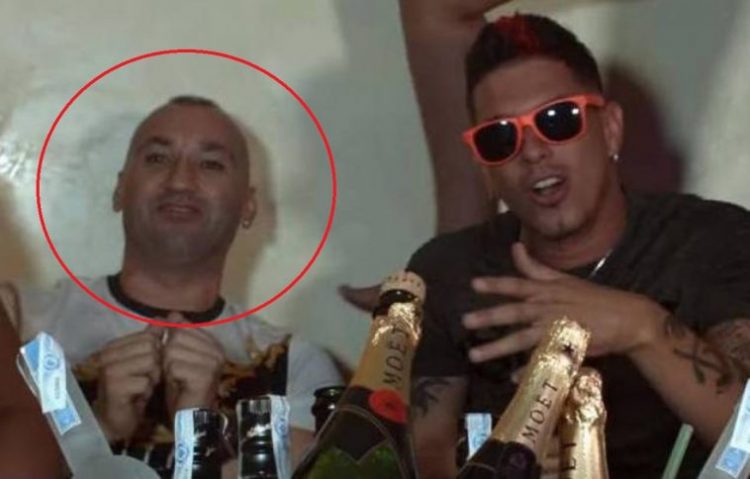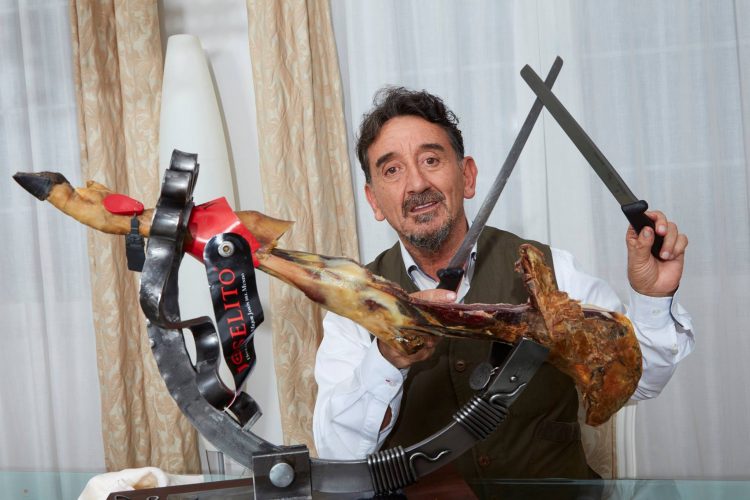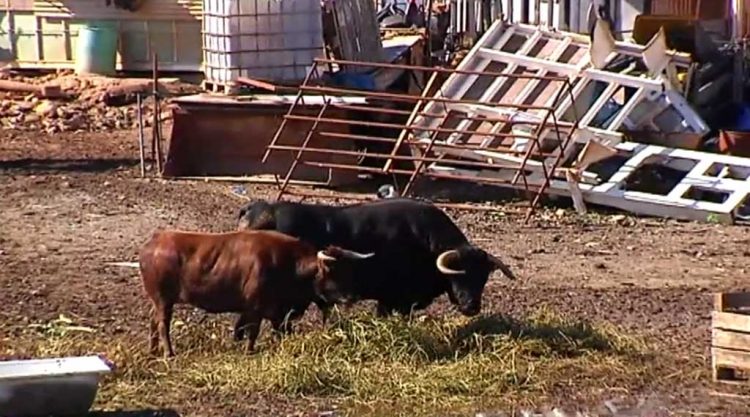Family Discover Colony of 80,000 Bees Living in Their Bedroom Wall

A family in Granada, Spain was shocked to discover that the constant buzzing coming from behind their bedroom wall turned out to be a massive bee colony numbering over 80,000 honey bees. Spanish social media has been buzzing with the news of a couple in Pinos Puente, Granada, who recently asked a local beekeeper to […]
Inmate Declares Himself a Disciple of Bachus to Receive Wine with Every Meal

A Spanish inmate recently invoked the principle of religious freedom in an attempt to convince the prison warden to serve him a glass of wine with every meal so he could worship his chosen deity. In a letter addressed to the director of Zaballa prison, in Spain’s Basque Country, the unnamed prisoner declares himself a […]
79-Year-Old Man Vandalizes Over 1,000 Cars in One Year

For over a decade, residents of the O Calvario and A Doblada neighborhoods in the Spanish city of Vigo have been living in fear of finding their cars scratched or with toothpicks jammed in the keyhole. The culprit? A 79-year-old man who has reportedly vandalized over 1,000 cars in the last year alone. Most often than […]
Spain’s Most-Wanted Drug Lord Taunts Police in Reggaeton Music Video

Spanish police have been hunting Francisco “Isco” Tejon, the head of Los Castanitas, since 2016, but the last place they expected to see him was in a risqué music video, driving luxury cars partying with scantly clad women. A music video posted on YouTube last week has been getting a lot of attention online for featuring […]
Spanish Minister Proposes Tax on Trying Out Clothes in Stores

A regional minister in the Spanish province of Castilla y León has come under fire for proposing that brick and mortar clothing stores charge a fee for customers to try on clothes in order to discourage the ‘unethical practice’ of trying on clothes only to buy them cheaper online. María del Pilar del Olmo, Castilla y León’s economy […]
Spanish Second-Hand Bookstore Finds Fake Bomb-Book in Its Collection

Staff at a second-hand bookstore in Badajoz, western Spain, were terrified to discover that one of the books in their collection had had its pages removed and replaced with a complex mechanism that closely resembled a bomb. The book in question, a copy of “The King of Beggars” by French writer Jean Larteguy attracted the […]
Man Raised by Wolves Is Disappointed with Life Among Humans

Marcos Rodríguez Pantoja lived among wolves for 12 years in the mountains of Spain’s Cordoba province, before being discovered by the Civil Guard at age 19 and brought back into civilization. But even now, at age 72, Pantoja still hasn’t completely adjusted to life among humans. Born in Añora, Cordoba, in 1946, Marcos Rodríguez Pantoja lost his […]
Woman Has Been Living in an Aseptic Glass Cage for 13 Years, Unable to Even Touch Her Loved Ones

53-year-old Juana Munoz, from Cadiz, Spain, has been living in a custom glass cage for the last 13 years. It is her prison, but also the very thing that keeps her protected from all the things that would otherwise kill her. After being diagnosed with four life-threatening conditions – multiple chemical sensitivity (MCS), fibromyalgia, chronic fatigue […]
Exasperated Woman Wants Her Remains Tested for DNA to Prove That She’s Alive

53-year-old Juana Escudero is alive and well, but she’s been struggling to prove it for the last seven years. Following an administrative error, she was registered as deceased, and has been unable to accomplish simple tasks, like renewing her driver’s license or scheduling a doctor’s appointment, ever since. Escudero has become so desperate to fix things […]
New Service Has Couples Walking Barefoot on Broken Glass on Their Wedding Day

Couples looking for a unique and unforgettable wedding day experience can now add walking barefoot on broken glass on their list of options. A Spanish company recently introduced the service as a metaphor for marriage. Some people wouldn’t dare walk barefoot on pieces of broken glass even if somebody paid them to do it, but […]
Architect Turns Old Cement Factory into Awe-Inspiring Work/Living Space

Covered by climbing plants and surrounded by a garden of eucalyptus, palms, olive trees and cypresses, this old cement factory on the outskirts of Barcelona looks like an abandoned industrial complex reclaimed by nature. In reality, it’s a bustling work/living space designed by Spanish architect Ricardo Bofill. Bofill discovered the closed down World War I cement […]
The Cruel Spanish Tradition That Kills Tens of Thousands of Greyhounds Every Year

You probably already know about bullfighting and the controversy surrounding this ancient tradition, but there’s another less known tradition that claims the lives of tens of thousands of Spanish hunting dogs every year. And worst of all, nobody seems to want to do anything about it. Galgos, or Spanish greyhounds, are an ancient breed of […]
This Man Gets Paid $4,000 for Slicing a Leg of Spanish Cured Ham

Florencio Sanchidrián has been slicing Iberian ham (jamon) for the last three decades and today his name is synonymous with the Spanish delicacy. The 55-year-old is regarded as the world’s best ham slicer in the world, and he charges accordingly for his services – a reported $4,000 to slice a leg of ham. Born in the […]
Corona Brewery Founder makes Everyone in His Home Village a Millionaire
The 80 inhabitants of a small Spanish village by the name of Cerezales del Condado have all become millionaires overnight, after inheriting roughly $210 million from Antonino Fernández, the founder of the world famous Corona Brewery. Fernández was born and raised in Cerezales del Condado, before emigrating to Mexico in 1949, at the age of 32, to work for […]
Spanish Junkyard Owner Replaces Guard Dogs with Bullfighting Bulls

After falling victim to no less than seven break-ins last summer, the owner of a second hand auto parts business in Montserrat, Spain, has replaced his guard dogs with a pair of ‘toro bravos’, a Spanish breed of bull used in bullfighting, to roam the property and deter potential intruders. Emilio Cervero told Spanish reporters that his […]
